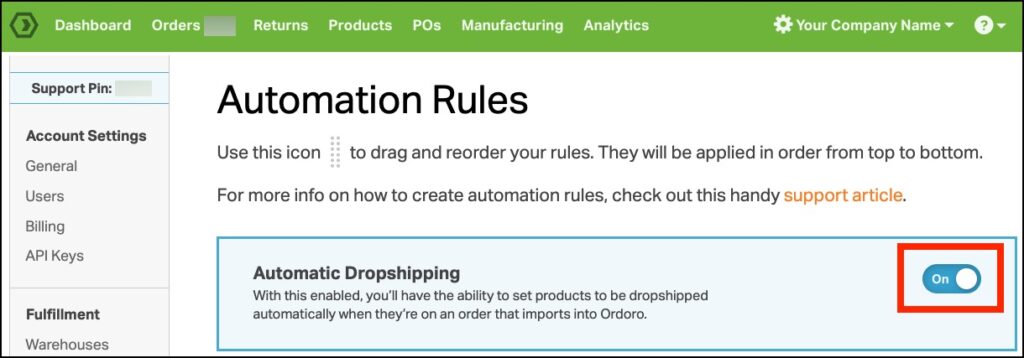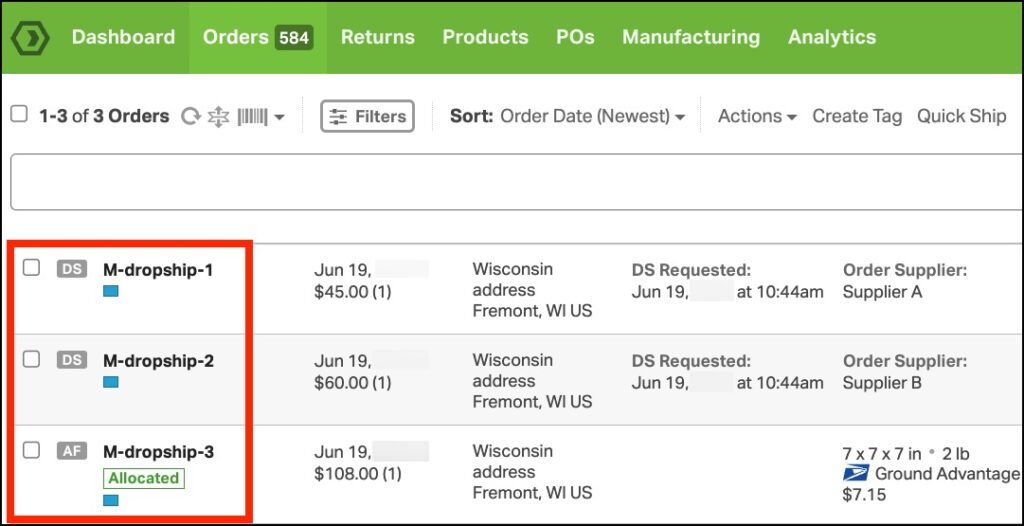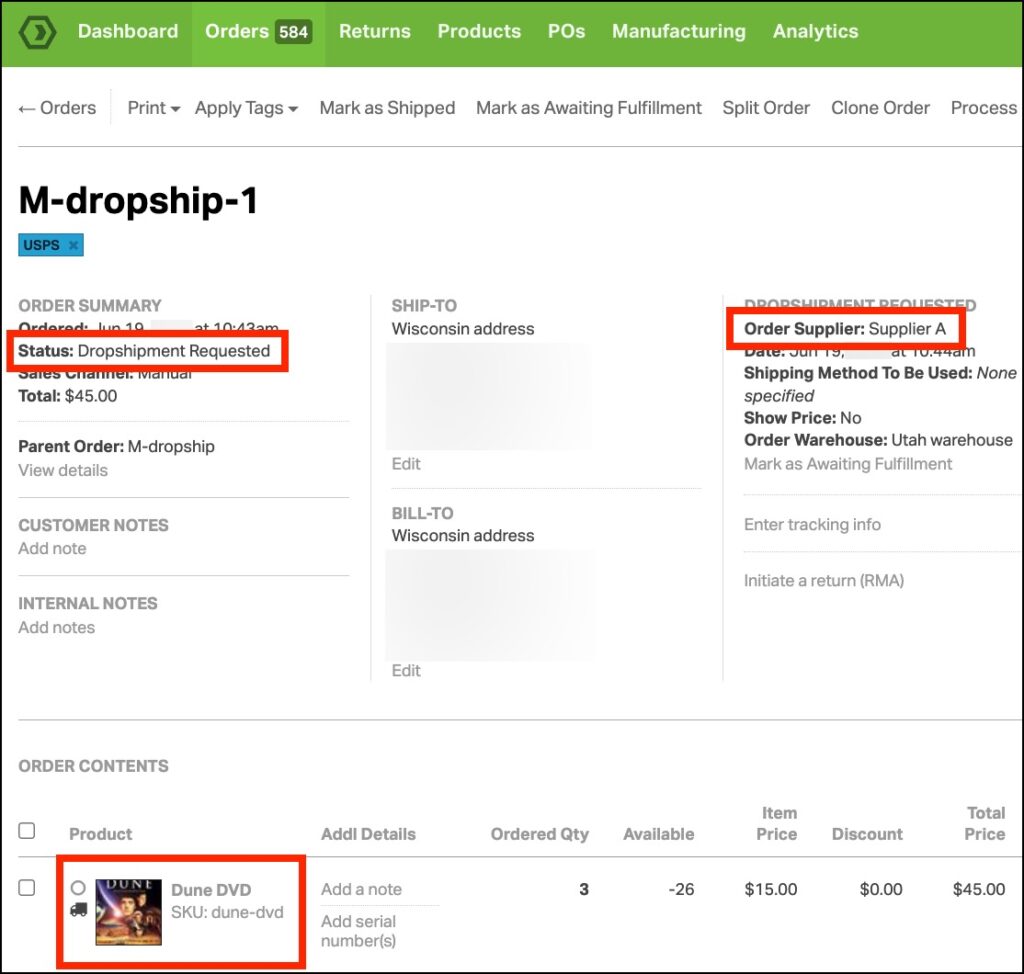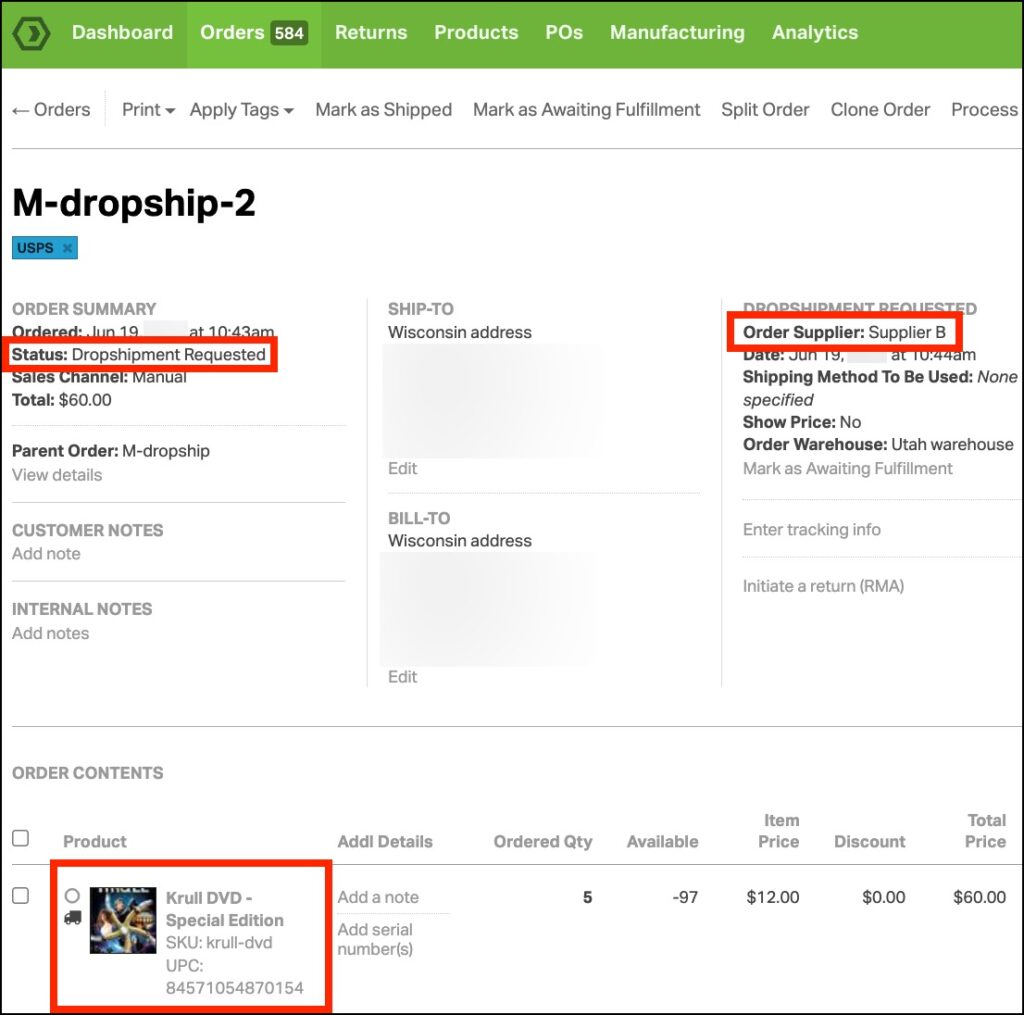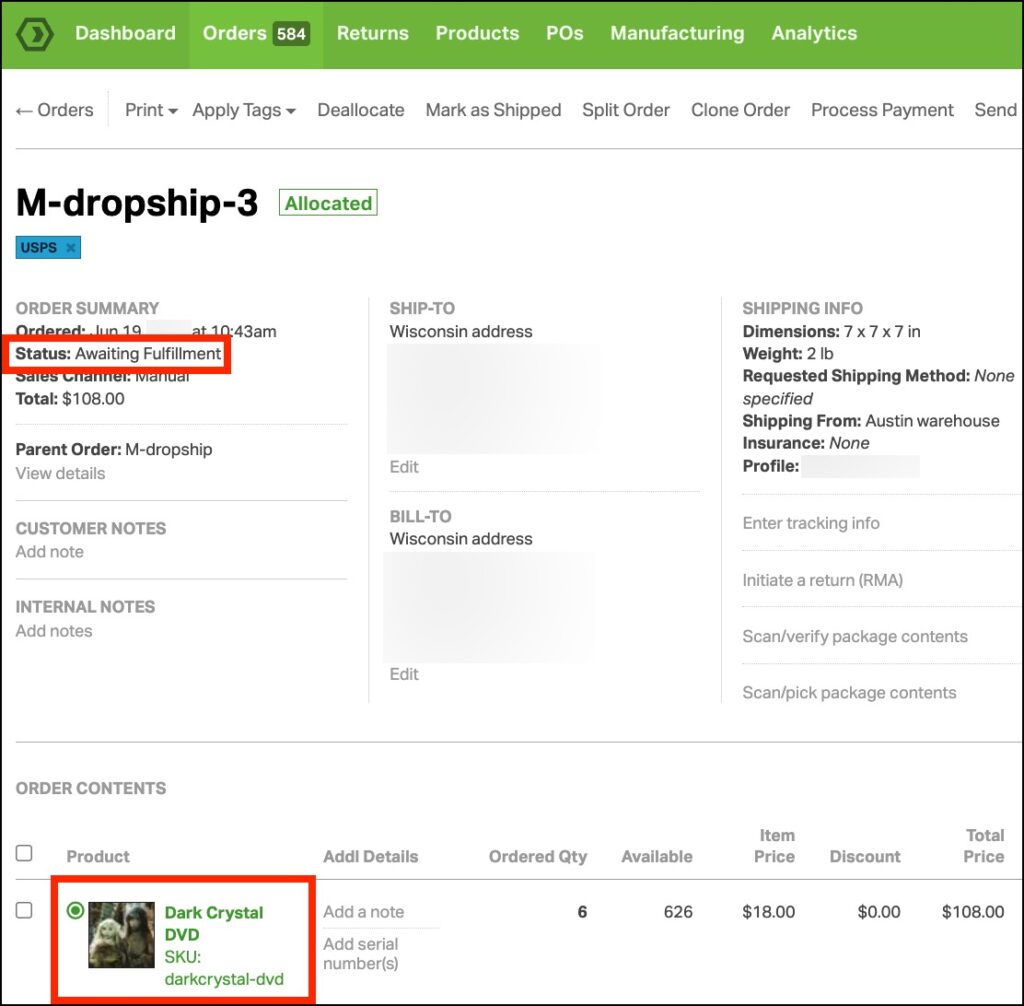Ordoro’s automatic dropshipping feature simplifies your order fulfillment process by automatically sending orders to suppliers. This guide explains how it works and how to set it up.
Topics
Key Features
- Automatic Order Splitting: Effortlessly separates orders into supplier-specific and in-house fulfillment.
- Instant Email Notifications: Automatically emails suppliers for dropshipped items.
- Tracking Updates: Easily update tracking information to notify customers.
- Supplier Unit Price Option: Choose to include supplier pricing in dropship requests.
By following these steps, you can streamline your order fulfillment process and ensure efficient handling of both dropshipped and in-house products. Ordoro’s automatic dropshipping feature makes managing your orders easier and more efficient.
Step-by-Step Process
1. Enable Automatic Dropshipping
To get started, make sure the “Automatic Dropshipping” toggle is set to On in your Rules Settings. This setting allows you to configure products to be automatically dropshipped when they appear in an order imported into Ordoro.
The text next to the toggle states: “With this enabled, you’ll have the ability to set products to be dropshipped automatically when they’re on an order that imports into Ordoro.”
2. Assign SKUs to Be Automatically Dropshipped
Next, assign specific SKUs to be automatically dropshipped by a supplier. This involves setting a default supplier for your products and marking the SKUs for automatic dropship. Follow the steps in this support article to complete this setup.
3. Import Orders
Once orders are imported into Ordoro, the system will handle them based on the types of products they contain. Here’s what happens next:
- Order Splitting: If an order contains both dropshipped and non-dropshipped products, it will be split into separate orders.
- Automatic Emailing: Orders with automatically dropshipped products will be emailed to the assigned suppliers immediately. You can view these orders in the “Dropshipment Requested” filter.
- Supplier Unit Price: You can choose to include the supplier unit price in the dropship requests. Refer to this article for more details.
- In-House Products: Orders with in-house products will remain in your “Awaiting Fulfillment” filter until you ship them yourself.
4. Update Tracking Information
After your supplier confirms the order has shipped and provides a tracking number, you can update this information in Ordoro. This ensures that both your cart and the customer are notified that the order is on its way. This support article explains how to upload the tracking numbers via a CSV file.
Example Order Workflow
Let’s look at an example to understand how Ordoro handles an order with both dropshipped and in-house products.
Order Details
- Order M-dropship: Contains three items:
- Dune DVD: auto-dropshipped by Supplier A
- Krull DVD: auto-dropshipped by Supplier B
- Dark Crystal DVD: handled in-house
Order Splitting
Ordoro will automatically split this order into three new orders.
Filters
- Dropshipment Requested: Orders -1 and -2 are listed here, waiting for supplier action.
- Awaiting Fulfillment: Order -3 remains here until you handle the shipping.
Details about each order are below.
- Order M-dropship-1: Emailed to Supplier A for the Dune DVD. This order appears in the “Dropshipment Requested” filter.
- Order M-dropship-2: Emailed to Supplier B for the Krull DVD. This order also appears in the “Dropshipment Requested” filter.
- Order M-dropship-order-3: Remains in the “Awaiting Fulfillment” filter for you to create a shipping label and ship the item yourself.

